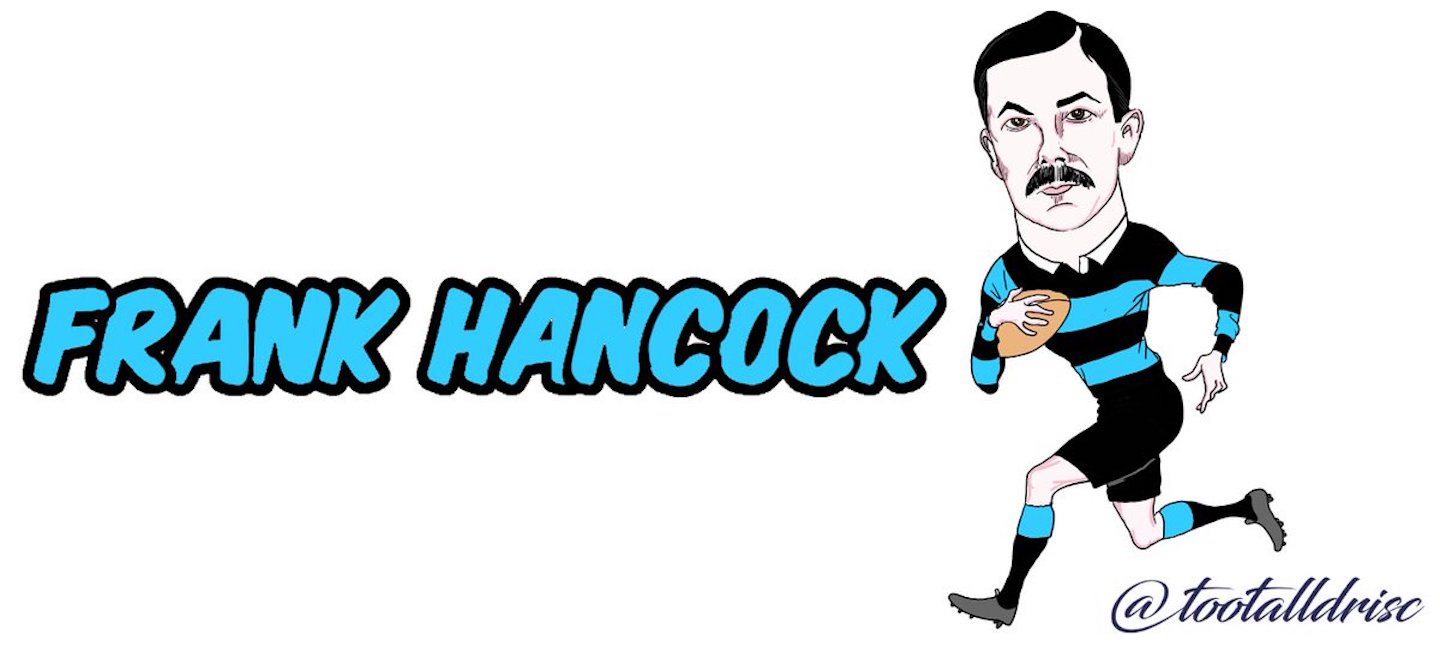When Frank Hancock came to Cardiff to work in the family’s brewing business in the town nobody could have foreseen the chain of events that would lead to the game of rugby union being forever changed and would ultimately see Hancock and Cardiff RFC being inducted into the World Rugby Hall of Fame.
Hancock was born in Wiveliscombe, Somerset and was an outstanding rugby player. At seventeen he captained his local club Wiveliscombe (a prominent side at the time) for two seasons, with an unbeaten home ground record. He also captained Somerset against leading University and county opponents.
His first team debut for Cardiff came late in the 1883-4 season, against Cheltenham College. Teams played at that time with three three-quarters, but such was the impression made by Hancock that the Cardiff committee couldn’t leave him out of the next game. They elected to select four three-quarters, sacrificing one of the forwards, a move met with some success.
By 1885-6, Hancock was Cardiff captain in a season that was one of the greatest in the club’s history. A man of outstanding character and leadership, he was a brilliant three-quarter, noted for his dodging and corkscrew running.
Idolised by his team he inspired them to achieve some of the most remarkable performances, based on team work and unselfishness. Cardiff regularly adopted the four three-quarter system and the rest, as they say, is history.
With the experience of this innovation behind him, he became the grand tutor of “the passing game” to his team of excellent performers. He was dedicated to the winning of matches by scoring tries and disdained the dropped goal. In one match he lectured one of his team for attempting a dropped goal and, in the presence of the nearby spectators, warned all his players that he would send any of them off the field if they repeated the ‘indiscretion’.
In 1885-86 not one dropped goal, penalty or goal from a mark was scored-only tries, 131 with only four against – “Sawdust” Hughes was responsible for kicking all the season’s seventy conversions. Press adulation was abundant; “never was better passing ever witnessed” reflected the brilliance of some remarkable victories.
No Welsh club scored a try against them and Cardiff’s line was crossed only four times all season, three times by Moseley in two matches and once by Gloucester. All opposition had been overcome in 1885-86 until the very last match of the season at the Arms Park, when, inexplicably, Moseley were victorious.
To have suffered defeat at the very last hurdle was a great disappointment to the club, supporters, and players as preparations were being made to celebrate an unbeaten season. It must have been most keenly felt by the captain, whose team, under his leadership, had demonstrated so well the four three-quarter system, “the passing game”, which is to this day a tradition of the Cardiff Club.
He was, in a manner of speaking, a Messiah, a Messiah of the “Blue and Black magic”. This was now the best team in South Wales.
Frank Hancock only played 50 games for Cardiff, scoring 35 tries (and represented Wales on four occasions) but the rugby world would forever be changed by his contribution to Cardiff rugby.
‘A History of Blue and Black – The Greats’ is a new series brought to you by Cardiff Blues, in association with CF10 Rugby Trust and local artist, Tim Driscoll. We look back at the life and careers of Cardiff Arms Park’s most iconic figures – from the rugby team’s inception in 1876 through to the 21 century and the regional era.

